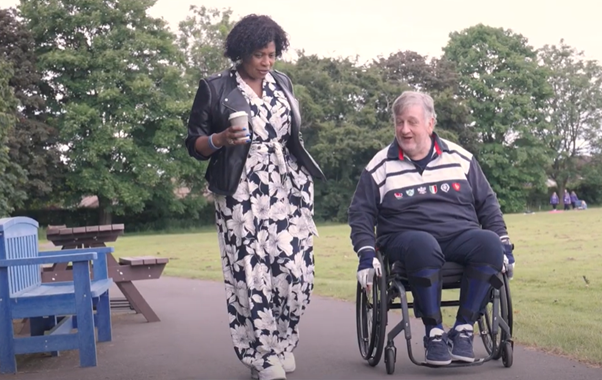Let there be volunteer management!
One winters day in 1963 at Fulbourne Hospital in Cambridgeshire, an unspecified number of cloak-clad senior managers huddled around a dimly lit NHS desk-lamp, and decided to advertise a post for a paid voluntary services organiser…
So voluntary services were henceforth organised. But sometimes they needed managing, other times they needed to be led, and on frequent occasions needed to be supported and negotiated.
Someone decided that the people doing the voluntary services organising/management/leading/supporting/negotiating needed some training to do all these things, and this decision begat many training courses. Most course outlines started life as notes on napkins, beermats, the back of cigarette packets. The course outlines begat trainers and the trainers begat lots of delivery to any volunteer manager could get their organisation to fund a day’s training for them.
Let there be volunteer management qualifications!
Then in 2005, someone said “Where are the accredited training programmes for people who manage volunteers?”. There was much tumbleweed, and no-one responded…
… until a consortium led by Attend liaised with the CIPD (Chartered Institute of Personnel and Development), to tailor the Certificate in Personnel Practice, for people managing volunteers.
In parallel to this, Skills Third Sector were developing the National Occupational Standards for Volunteer Managers, which were adopted by the Institute of Leadership and Management (now ILM), who developed a suite of accredited programmes, just for volunteer management. In the words of Sue Jones (Warrington Voluntary Action) “there was something special about volunteer management being part of ILM. It felt grown-up, like we were finally sitting at the main table, rather than being on the sidelines, sitting at the camping table with the kids.”
There were accredited programmes designed for people managing volunteers on a day-to-day basis, and for those managing volunteering programmes, and these were delivered all over everywhere. Volunteer Management was now being recognised by awarding bodies, employers and funders as credible and worth the investment.
…and then all of a sudden they weren’t. Government funding dried up, and employers decided the programmes were not so attractive if funding them came from their own budgets!
So the ILM, seeing the reduction in registrations started withdrawing ‘unviable’ programmes from their portfolio, and today the only one left is the Level 3 Award in the Management of Volunteers – the shortest of their programmes. The Level 4 and 5 programmes now sit destined to gathering e-dust in the forgotten clouds.
So, here we go again… in 2019, Attend liaised with the CMI (Chartered Management Institute), to tailor the Level 5 Certificate in Management and Leadership, for people managing volunteers. The sector once again has a nationally accredited qualification tailored for those managing volunteering programmes.
Maybe that’s where volunteer management needs to sit? As part of a mainstream national management and leadership qualification, where folks can obtain a qualification recognised by employers, tailored to volunteer management, and transferable to the wider world of work, thus future proofing the careers of those who study and pass the programme.
…maybe this approach might be more attractive to those holding the purse strings of staff development budgets!


